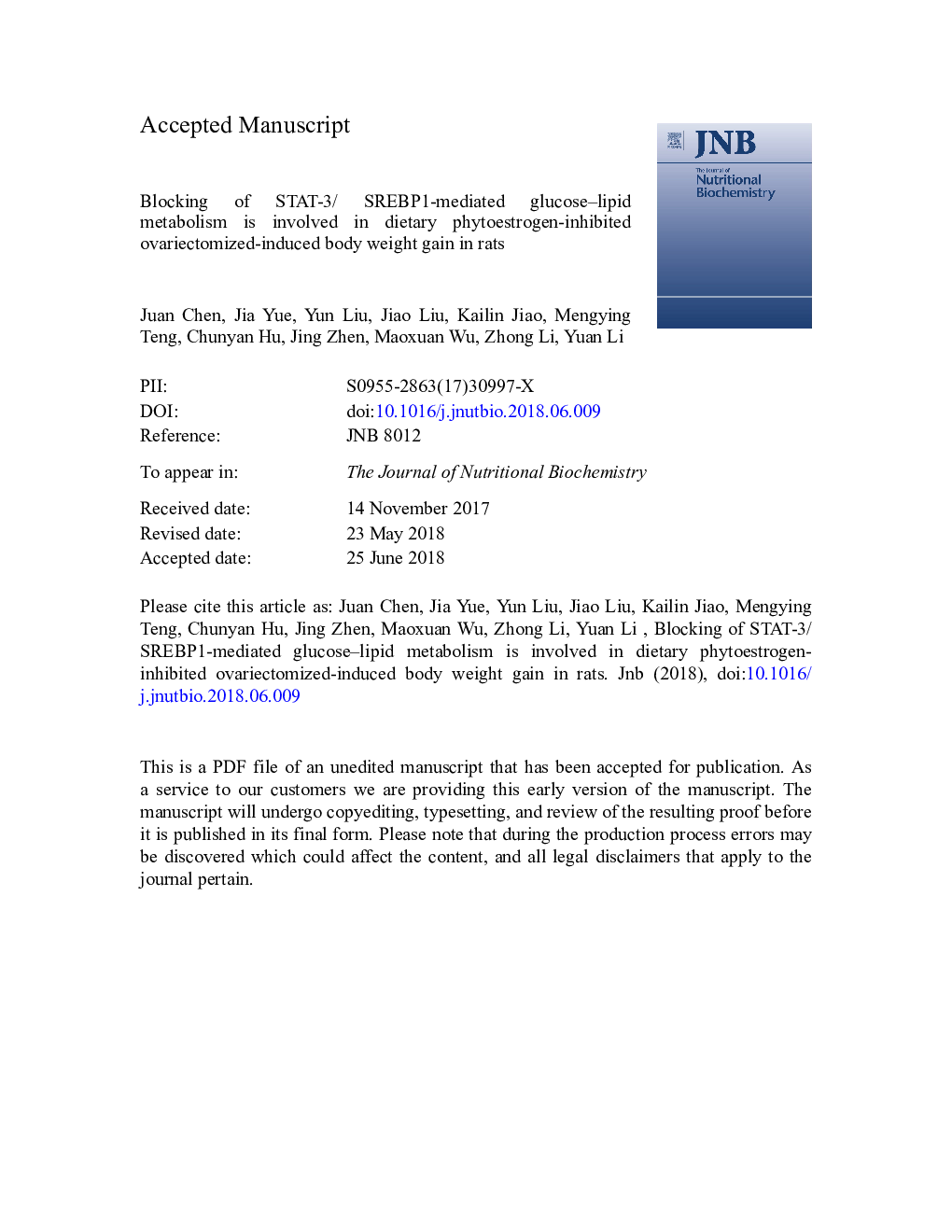| کد مقاله | کد نشریه | سال انتشار | مقاله انگلیسی | نسخه تمام متن |
|---|---|---|---|---|
| 9954184 | 1540607 | 2018 | 32 صفحه PDF | دانلود رایگان |
عنوان انگلیسی مقاله ISI
Blocking of STAT-3/SREBP1-mediated glucose-lipid metabolism is involved in dietary phytoestrogen-inhibited ovariectomized-induced body weight gain in rats
دانلود مقاله + سفارش ترجمه
دانلود مقاله ISI انگلیسی
رایگان برای ایرانیان
کلمات کلیدی
موضوعات مرتبط
علوم زیستی و بیوفناوری
بیوشیمی، ژنتیک و زیست شناسی مولکولی
زیست شیمی
پیش نمایش صفحه اول مقاله

چکیده انگلیسی
Postmenopausal women have a decline in circulating estrogen levels and are more prone to obesity and its related metabolic diseases than premenopausal women are. The absence of safe and effective conventional treatments for postmenopausal obesity has changed the focus to natural products as alternative remedies. Here, ovariectomized rats and LO2 cells were used to study the molecular basis of the effect of dietary phytoestrogens on body weight gain and hepatic steatosis. Dietary phytoestrogens can inhibit ovariectomy (OVX)-induced body weight gain, blood glucose concentration, expression of hepatic lipogenic genes, such as sterol regulatory element binding protein (SREBP)1, acetyl-CoA carboxylase (ACC)1, fatty acid synthase (FAS), and stearoyl-CoA desaturase (SCD)1, and decrease liver triglyceride (TG) content, but later estradiol withdrawal increased expression of SREBP1. Histological analysis of liver showed that dietary phytoestrogens improved OVX-induced morphological abnormalities. OVX and high glucose-induced phosphorylation of signal transducer and activator of transcription (STAT)-3 were inhibited by phytoestrogens treatment. In LO2 cells, inhibition of STAT-3 by siRNA attenuated the increased TG content and expression of SREBP1 induced by high glucose. Phytoestrogens reduced the upregulation of SREBP1 and TG induced by high glucose in LO2 cells. In conclusion, these findings illustrated that dietary phytoestrogens markedly alleviated the derangement of lipid metabolism. The underlying mechanism is probably associated with regulating STAT-3/SREBP1 signaling.
ناشر
Database: Elsevier - ScienceDirect (ساینس دایرکت)
Journal: The Journal of Nutritional Biochemistry - Volume 61, November 2018, Pages 17-23
Journal: The Journal of Nutritional Biochemistry - Volume 61, November 2018, Pages 17-23
نویسندگان
Juan Chen, Jia Yue, Yun Liu, Jiao Liu, Kailin Jiao, Mengying Teng, Chunyan Hu, Jing Zhen, Maoxuan Wu, Zhong Li, Yuan Li,